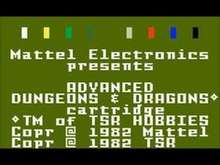Title page
The title page of a book, thesis or other written work is the page at or near the front which displays its title, subtitle, author, publisher, and edition. (A half title, by contrast, displays only the title of a work.)

In books
The title page is one of the most important parts of the "front matter" or "preliminaries" of a book, as the data on it and its verso (together known as the "title leaf") are used to establish the "title proper and usually, though not necessarily, the statement of responsibility and the data relating to publication".[1] This determines the way the book is cited in library catalogs and academic references.
The title page often shows the title of the work, the person or body responsible for its intellectual content, and the imprint, which contains the name and address of the book's publisher and its date of publication.[2] Particularly in paperback editions it may contain a shorter title than the cover or lack a descriptive subtitle. Further information about the publication of the book, including its copyright information, is frequently printed on the verso of the title page. Also often included there are the ISBN and a "printer's key", also known as the "number line", which indicates the print run to which the volume belongs.
The first printed books, or incunabula, did not have title pages: the text simply begins on the first page, and the book is often identified by the initial words—the incipit—of the text proper.
In academic publishing
The title page of a thesis or essay is the work's first page. It lists the title of the work and the name of the author.
In the case of an academic paper, the title page also lists class information (such as the course name and number), identification information (such as the student number), the date, name of the professor, and name of the institution. The title page is not numbered.
Title pages are not required in all citation styles; instead, some styles require that the same information is placed at the top of the essay's first page.
The title page for a thesis contains the full title, the author's name and academic credentials, the degree-granting faculty and department name, the name of the university and date of graduation, and the universal copyright symbol. The thesis title page is usually page i, but is not numbered; the abstract (page ii) is the first numbered page.
In video games

The title page in video games serves the same purpose, showing the game's name and any appropriate trademark and copyright notices. Some games require the player to press a button or a key to advance past the title page; other games display the title page for a set number of seconds before continuing, or display the title page until the game has finished loading.
Video game title pages can be sparse affairs, like those of the Mattel Intellivision in the early 1980s, or can feature artwork and animation.
See also
- Book design
- Half title
- Printer's key
References
- Gorman, Michael and Paul W. Winkler (eds.), Anglo-American cataloguing rules, 2nd ed., London, Library Association, 1978, 'Glossary', p.571
- Cowley, John Duncan (1970), Bibliographical description and cataloguing, New York: Burt Franklin, p. 29–32, 77–88, archived from the original on 2018-01-21
External links
| Look up title page in Wiktionary, the free dictionary. |
| Wikimedia Commons has media related to Title pages. |
- Prints & People: A Social History of Printed Pictures, an exhibition catalog from The Metropolitan Museum of Art (fully available online as PDF), which contains material on title pages
- Glasgow University Library, Special Collections Department, Book of the Month
- High resolution scans of title pages